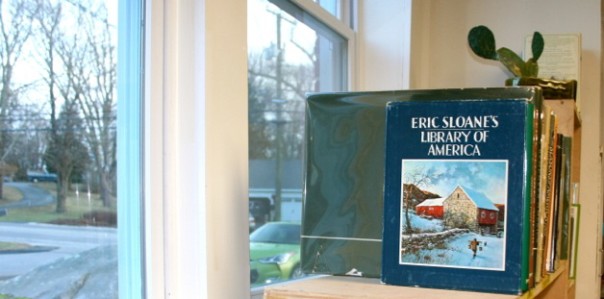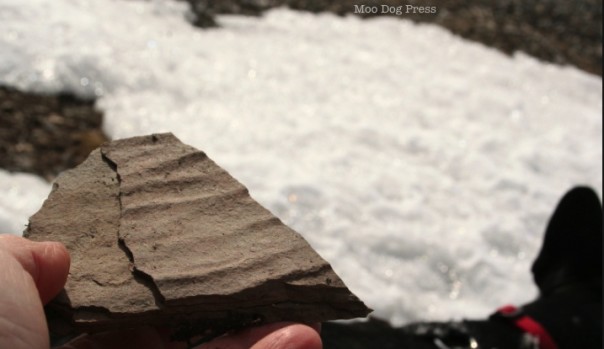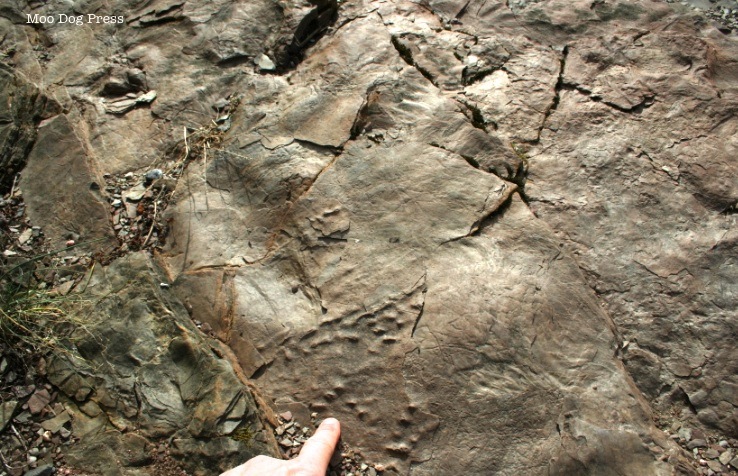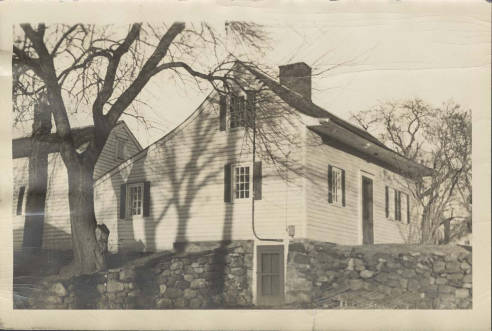There Will Be Mud. Spring Freshets, Stone Ripples, Signs of Spring. Eric Sloane
“If you find a pair of rare items you are lucky; if you find a third, you're on your way to being a collector.” – Eric Sloane
Indoors, let me out. Outdoors, squish squash go boots in the mud. Rivulets cut new paths in the earth, build momentum, carry all found into rivers and, in time, the ocean. And there are unearthed treasures worth looking for. A good reason for a late afternoon walk by Wethersfield Cove to find traces of prehistoric life in fossilized mud along with ripple marks frozen in time. Layers of history in a town that is one of the oldest in the United States. But the stone underfoot predates humanity.
The Tryall, the first ship built in Connecticut, was built and launched from the cove when it was then a bend in the Connecticut River in 1649. Imagine all that has gone before as you walk the shale-y ledges at the foot of the warehouse. A mass of seagulls stand on the still-snowy cove now; the surface is not safe for ice fishing anymore. The more balmy weather has also attracted a scattering of people who sit to enjoy the bright sun awhile.
Rake stray chunks of gravel from lawns, pick up downed tree branches, brush and curry equines as their coats shed out. Unplug from the constant chatter and handheld computing addictions. Visit a nearby farm for fresh milk, yogurt, cheese, winter greens, other good food or products.
Take a dog for a walk; volunteer to exercise one at a shelter or dog pound. Borrow a child and see the world from a different perspective. Stretch and observe. Spring ephemerals (wildflowers) include trillium, trout lilies, bloodroot, Dutchman's breeches, coltsfoot. Some native, some not – all welcome sights.
Soon the apple blossoms will begin.Now for a few places to find people doing and finding interesting things.
The Connecticut State Library is a notable place that holds safe all sorts of stories and images. One amazing category is the Research Guide to Old House Resources, which includes “The Census of Old Buildings in Connecticut, 1934-1935.” This Works Progress Administration (WPA) project includes survey forms with descriptions of nearly 5,000 buildings, photographs, sketches of interior and/or exterior architectural details, and a brief history of the building. Categories include barns, mills, farm buildings, farmhouses, forges, much more. The passing of trades once common is fascinating in itself.
The collection is searchable by town, building type, date.
Connecticut is a diverse and surprising state. For instance, the Quiet Corner Initiative was created in 2010 as “a unique form of cooperative where the faculty, students, landowners, the local forest products industry and conservation organizations work together as peers to improve the stewardship of our natural resources. It centers around the 8,000 acres of the Yale-Myers Forest – a self-sufficient and certified woodland among the oldest sustainably managed forests in the nation – and its four neighboring towns of Ashford, Eastford, Union and Woodstock. It focuses on three main areas: sound forestland management, renewable energy, and small-scale agriculture.”
To see why the area has that name, check out The Yale School of Forestry and Environmental Studies site – there is an image taken from space that is well worth a look to see the big-picture view of our human activity.
Here is the link. While reading on the site, take into consideration that 10,880 acres of forestland in Connecticut, New Hampshire, and Vermont that are managed by the School Forests Program. There is a useful and incredibly detailed guide Common Plants of The Quiet Corner: A Functional Guide online. Lavishly illustrated with photographs and descriptions, what a resource. Below is an example of one page and the image of a Jack in the pulpit, linked to the PDF.
And just what is a freshet? Those who live by a river in New England know the word, and some I've met in Connecticut even move furniture from the ground floor to an upper floor each spring.
“Every spring there is more or less of a freshet caused by the dissolving of the snow in the woods and mountains. If it be gradual, as it always is when not accelerated by a heavy rain, no damage is done by the rising of the water. Immense quantities of drift wood are brought down by these freshets from which the inhabitants of the lower towns contiguous to the rivers are supplied with fuel and they have learned to be extremely dextrous in towing on shore whole trees with their branches. But notwithstanding their activity. much escapes them and is driven out to sea and some of it is thrown back on the coast. … The Connecticut river in a common freshet is ten feet higher than its usual summer level.”
– An Historical, Geographical, Commercial, and Philosophical View of the of the United States of America, and of the European Settlements in America and the West-Indies by William Winterbotham (available as a Google e-book), published in 1796.
Eric Sloane. For those who have not yet visited the Eric Sloane Museum & Kent Iron Furnace (on the National Register of Historic Places and a Connecticut State Archaeological Preserve), try to get there. Admission free for the museum. The grounds are open to the public.
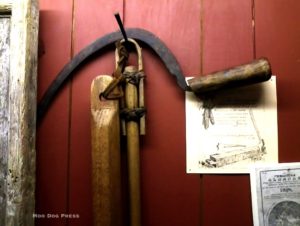
From a visit to the Eric Sloane Museum. CB/DMP Image is connected to a recent story about one of Sloane's lesser-known wall-sized paintings.
From the site: “Eric Sloane (1905-1985) was a prolific artist, author and illustrator of over 30 books, and an avid collector of Americana. His extensive collection of hand tools is displayed in a building gifted to the State in 1969 by Stanley Works, the Connecticut-based tool manufacturing company, to mark their 125th anniversary. The collection tells a fascinating story about bygone times and the great American heritage of craftsmanship. Sloane's career as an artist comes vividly alive in his studio, minutely re-created with his paint-spattered easel and rows of jars jammed with paint brushes. Examples of his artworks are displayed in an adjoining gallery. Adjacent to the museum, Sloane himself built a pioneer cabin as described by Noah Blake in Diary of An Early American Boy, an 1805 diary published by Sloane. The Kent Iron Furnace, which is on the museum property, began production of pig iron in 1826 and continued for almost 70 years. The remains of the granite blast furnace with its Gothic arches can be seen just below the museum. The museum features works of art by Eric Sloane and houses a reconstruction of his studio. Extensive collection of early American tools. Some prints, books and videos are available for sale. Remains of the Kent Iron Furnace operating from 1826-1892 on grounds. A replica of the the cabin from Sloane's book, “Diary of an Early American Boy: Noah Blake 1805″ built by Sloane stands near the museum.”
The museum will open for the 2018 season on Friday, May 4. The Friends of the Eric Sloane Museum will be looking for volunteers to split shingles and hew logs to build the Noah Blake cabin on the dates listed on the group's Facebook page.

